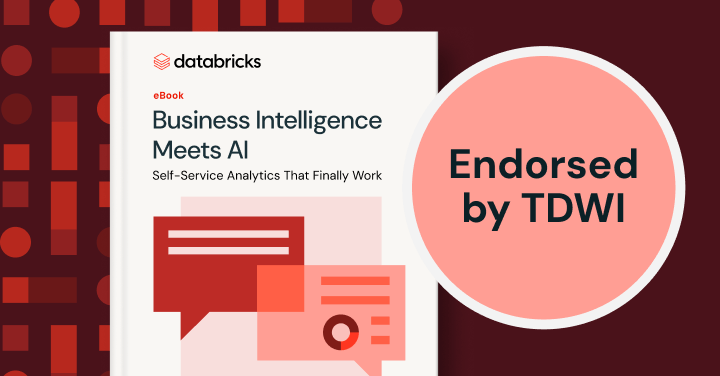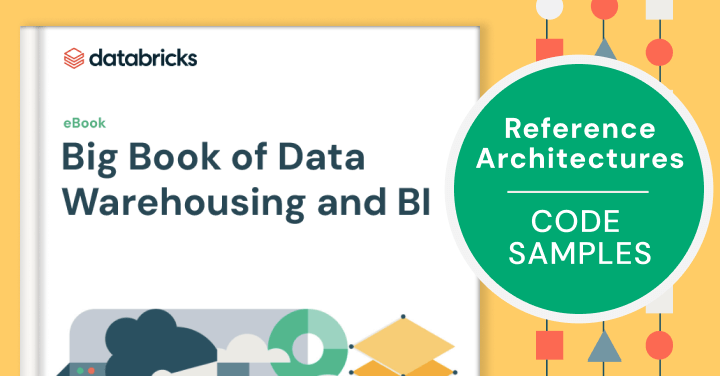비즈니스 인텔리전스 플랫폼 소개
비즈니스 인텔리전스(BI) 플랫폼은 조직이 데이터를 수집·이해·시각화하여 근거 있는 비즈니스 의사결정을 내릴 수 있도록 돕는 종합적인 기술 솔루션입니다. 이러한 플랫폼은 기업 데이터 전략의 기술적 중추 역할을 하며, 조직 전반에서 발생하는 원시 정보를 실행 가능한 인사이트로 전환하여 경쟁 우위를 이끌어냅니다.
비즈니스 인텔리전스라는 개념은 1865년으로 거슬러 올라가며, 리처드 밀러 데벤스(Richard Millar Devens)가 은행가 헨리 퍼니스 경(Sir Henry Furnese)이 더 나은 정보 수집을 통해 경쟁 우위를 얻은 사례를 처음 설명하면서 등장했습니다. 1960년대 초기 BI 플랫폼과 시스템은 IT 부서의 많은 개입이 필요한 정적인 보고 도구였습니다. 1990년대에는 데이터 웨어하우징과 OLAP 기능이 등장했고, 2000년대에는 셀프 서비스 기능이 도입되었습니다. 오늘날의 플랫폼은 AI, 자연어 처리, 자동 인사이트 생성 기능을 포함합니다.
현대 BI 플랫폼은 “사용성 없는 데이터 풍요”라는 중요한 과제를 해결합니다. 평균적인 기업은 수백 테라바이트의 데이터를 다양한 소스로부터 관리하지만, 많은 엔터프라이즈 데이터가 분석에 활용되지 않고 있습니다. 데이터를 효과적으로 활용하는 조직은 더 나은 제품을 만들고, 고객을 더 효과적으로 지원하며, 문제가 되기 전에 사안을 식별함으로써 더 효율적으로 운영할 수 있습니다.
주요 이점에는 의사결정 속도와 정확성 향상, 자동화된 보고를 통한 운영 �효율성 증대, 수작업 제거에 따른 비용 절감, 그리고 무엇보다 모든 직원이 더 빠르게 의사결정을 내릴 수 있도록 하는 데이터 접근의 민주화가 포함됩니다.
추가로 살펴보기
비즈니스 인텔리전스 플랫폼의 작동 방식
BI 플랫폼은 원시 데이터를 의미 있는 인사이트로 변환하는 정교하고 다층적인 아키텍처를 통해 운영됩니다. 이 과정은 CRM 시스템, ERP 애플리케이션, 마케팅 플랫폼, 금융 시스템, 외부 데이터 피드 등 다양한 소스로부터 데이터를 수집하고 가져오는 단계에서 시작합니다.
데이터 저장 아키텍처는 구조화된 데이터를 위한 전통적인 데이터 웨어하우스와, 소셜 미디어 콘텐츠나 IoT 센서 데이터와 같은 비정형 정보를 수용하는 최신 데이터 레이크를 결합합니다. 처리 계층은 ETL/ELT 워크플로를 통해 데이터를 정제, 검증, 표준화하면서 성능을 유지합니다.
분석 엔진은 수학적 알고리즘, 통계 모델, AI 기능을 적용하여 트렌드, 상관관계 및 예측 지표를 식별합니다. 표현 계층은 결과를 대시보드, 보고서, 시각화로 변환하여 인간이 이해하고 의사결정을 내릴 수 있도록 지원합니다.
사용자 상호작용은 시간이 지남에 따라 플랫폼의 효과성을 향상시키는 피드백 루프를 생성합니다. 고급 플랫폼은 자연어 처리를 포함하여, 사용자가 복잡한 기술적 인터페이스를 학습하지 않고도 대화형으로 질문할 수 있도록 합니다.
비즈니스 인텔리전스 도구의 주요 기능
비즈니스 인텔리전스 도구의 중요한 기능에는 다음이 포함됩니다:
- 데이터 발견 및 탐색: 사전에 정해진 가설 없이 데이터 세트를 조사할 수 있도록 하며, 직관적인 탐색 인터페이스와 필터링 기능을 통해 숨겨진 패턴을 발견할 수 있도록 합니다.
- 대화형 대시보드와 시각화: 복잡한 데이터 세트를 시각적 표현으로 변환하여 인사이트를 효과적으로 전달합니다. 사용자는 맞춤형 대시보드를 생성해 KPI를 모니터링하고 주요 지표를 실시간으로 확인할 수 있도록 합니다.
- 자동 보고 및 스케줄링: 수동 작업을 제거하면서도 일관된 정보 전달을 보장합니다. 사용자는 매개변수, 수신자, 일정 등을 정의하며, 조건부 트리거가 임계값에 도달했을 때 보고서를 자동으로 생성합니다.
- 셀프 서비스 분석: 비즈니스 사용자가 드래그 앤 드롭 인터페이스와 안내형 워크플로를 활용하여 직접 분석을 수행할 수 있도록 하여, 기술 전문가에 대한 의존도를 줄이고 데이터 접근을 민주화합니다.
- 데이터 모델링 및 준비: 데이터 정제, 변환, 통합을 위한 시각적 인터페이스를 제공하여, 원시 데이터가 ��분석 가능한 형태로 존재하지 않는 현실을 해결합니다.
- 모바일 및 임베디드 분석: 데스크톱 환경을 넘어 기능을 확장하여, 의사결정자가 어디서든 정보를 접근할 수 있도록 하며 기존 비즈니스 애플리케이션에 인사이트를 통합합니다.
- 자연어 질의: 사용자가 대화형으로 질문할 수 있도록 하며, 예측 분석을 통해 과거 분석을 넘어 미래 트렌드를 예측할 수 있도록 기능을 확장합니다.
- 데이터 거버넌스 및 보안 제어: 데이터의 무결성과 컴플라이언스를 유지하면서 생산적인 활용을 가능하게 합니다.
BI 플랫폼의 핵심 구성 요소
BI 플랫폼의 핵심 구성 요소에는 다음이 포함됩니다:
- 데이터 연결 및 통합 기능 — 네이티브 커넥터, API, 실시간 스트리밍 연결을 통해 플랫폼이 다양한 조직 시스템에 얼마나 효과적으로 접근하는지를 결정합니다.
- 데이터 준비 및 변환 도구 — 데이터 정제와 표준화를 위한 시각적 인터페이스를 제공하며, 점점 더 AI 기반 제안을 활용하여 적절한 변환 단계를 지원합니다.
- 데이터 시각화 및 대시보드 생성 — 방대한 차트 라이브러리와 맞춤화 옵션을 제공하여, 지리적 매핑과 같은 고급 기능을 포함한 설득력 있는 시각적 스토리를 구현할 수 있도록 합니다.
- 보고 기능 — 규정 준수를 위한 전통적인 서식 보고서와 사용자 요구에 따라 적응하는 현대적인 대화형 형식을 모두 포함합니다.
- 셀프 서비스 분석 기능 — 안내형 워크플로와 템플릿을 포함하여 기술적 장벽을 줄이는 동시에 분석적 엄밀성을 유지합니다.
- 협업 도구 — 팀 기반 분석 프로세스를 지원하기 위해 공유 메커니즘, 댓글 시스템, 버전 관리를 제공합니다.
BI 플랫폼의 유형
BI 플랫폼에는 다음과 같은 다양한 유형이 있습니다:
- 전통적 엔터프라이즈 BI 플랫폼: 복잡한 요구 사항을 가진 대규모 조직을 지원하며, 확장성·보안·거버넌스를 우선시하지만 상당한 기술 전문성과 긴 도입 기간을 요구합니다.
- 셀프 서비스 BI 플랫폼: 직관적인 인터페이스를 통해 분석을 민주화하며, IT 부서에 의존하지 않고 즉각적인 생산성을 가능하게 합니다.
- 클라우드 기반 BI 플랫폼: 스마트폰과 태블릿으로 분석 기능을 확장하며, 터치에 최적화된 인터페이스와 오프라인 기능을 제공합니다.
- 모바일 BI 플랫폼: Extend analytics to smartphones and tablets with touch-optimized interfaces and offline capabilities.
- 임베디드 BI 플랫폼: 기존 애플리케이션에 직접 통합되어, 익숙한 업무 환경 내에서 화이트 라벨 기능을 제공합니다.
엔터프라이즈 BI 플랫폼 평가 기준
주요 평가 요소에는 성장에 대응하고 응답 시간을 유지하기 위한 확장성과 성능, 도입률에 영향을 미치는 사용자 경험, 그리고 기존 시스템과 연결하기 위한 통합 기능이 포함됩니다.
데이터 처리 역량에는 다양한 데이터 유형 지원과 실시간 처리 기능이 포함되며, 보안 기능은 민감한 정보를 보호하고 규정을 준수하도록 합니다.
맞춤화 옵션은 플랫폼이 고유한 요구 사항에 얼마나 잘 적응할 수 있는지를 결정하며, 모바일 접근성은 어디서든 접근할 수 있도록 보장합니다. 또한 총소유비용(TCO)은 모든 구현 및 운영 비용을 시간에 따라 포함합니다.
주요 엔터프라이즈 BI 플랫폼 비교
고려하고 비교할 수 있는 주요 엔터프라이즈 BI 플랫폼에는 다음이 있습니다:
- Microsoft Power BI — 마이크로소프트 생태계 통합과 경쟁력 있는 가격을 통해 시장 침투를 달성하며, Microsoft Office 사용자에게 친숙한 인터페이스를 기반으로 셀프 서비스 분석에서 뛰어납니다.
- Tableau — 직관적인 드래그 앤 드롭 기능을 통해 정교한 시각 분석을 구현하며, 데이터 시각화 혁신을 선도합니다.
- Qlik — 고유한 연관 분석을 제공하여, 사전에 정의된 계층 구조 없이도 동적인 데이터 탐색을 가능하게 합니다.
- ThoughtSpot — 자연어 질의를 활용한 검색 기반 분석을 도입하여 즉각적인 시각화를 제공합니다.
- Looker (Google Cloud) — 모델링 계층에 집중하여 모든 분석 전반에서 일관된 비즈니스 로직을 보장합니다.
- Databricks AI/BI — 전통적인 대시보드 기능과 Genie를 통한 대화형 분석을 결합하여, 사용자가 자연어로 질문을 하고 즉각적인 인사이트를 얻을 수 있도록 합니다. 데이터 인텔리전스 플랫폼 위에 구축되어 Databricks SQL을 활용해 데이터를 처리하며, 데이터와 의미적 맥락을 결합하는 지식 저장소를 갖추어 AI 응답이 조직의 맥락에 맞고 정확하도록 보장합니다.
- Domo — 광범위한 커넥터와 협업 기능을 갖춘 클라우드 네이티브 역량을 제공합니다.
- MicroStrategy — 강력한 모바일 지원과 맞춤화 기능을 포함한 엔터프라이즈급 기능을 제공합니다.
- SAP BusinessObjects — SAP 엔터프라이즈 제품군과 통합된 포괄적인 기능을 제공합니다.
- IBM Cognos Analytics — 전통적인 BI와 AI 기반 인사이트 및 자연어 질의를 결합합니다.
- Oracle Analytics Cloud — 오라클의 광범위한 기술 생태계 내에서 통합된 기능을 제공합니다.
비즈니스 인텔리전스 플랫폼 활용 사례
비즈니스 인텔리전스 플랫폼의 활용 사례에는 다음이 포함됩니다:
- 리테일: 주요 유통 체인은 POS 데이터, 고객 충성도 정보, 재고 시스템을 결합한 BI 플랫폼을 활용하여 고객 세분화와 실시간 재고 최적화를 수행하며, 이를 통해 타겟 마케팅을 가능하게 하고 낭비를 줄입니다.
- 헬스케어: 의료 시스템은 전자 기록, 청구 데이터, 품질 지표를 통합하여 환자 결과 추적과 운영 효율성을 개선하며, 예측 분석을 통해 재입원 위험을 식별합니다.
- 금융: 은행은 거래 데이터와 고객 프로필을 통합하는 플랫폼을 활용하여 종합적인 리스크 모니터링과 실시간 사기 탐지를 수행합니다.
- 제조업: 글로벌 제조업체는 생산 데이터, 공급업체 정보, 품질 지표를 통합하여 공급망 최적화와 예측 유지보수를 실행합니다.
- 마케팅: 기업은 채널 전반의 캠페인 성과를 분석하고, 포괄적인 기여도 분석과 고객 여정 이해를 통해 마케팅 전략을 최적화합니다.
- 영업: 기업은 CRM 통합과 과거 패턴에 기반하여 파이프라인 성과를 추적하고 정확한 예측을 생성합니다.
- 인적 자원: 다국적 기업은 인력 데이터를 분석하여 인재 관리 최적화와 전략적 인력 계획을 수립합니다.
구현 시 고려사항
배포 옵션에는 관리 부담을 줄이고 글로벌 접근성을 제공하는 클라우드 기반 솔루션, 최대��한의 제어를 제공하는 온프레미스 배포, 그리고 양쪽의 장점을 결합한 하이브리드 방식이 포함됩니다.
사용자 교육 요구사항은 도입률에 큰 영향을 미치므로, 다양한 사용자 유형을 대상으로 한 실질적인 적용 사례와 지속적인 지원을 포함하는 종합적인 프로그램이 필요합니다.
통합 계획은 데이터 소스, 인증, 성능 영향 등을 신중하게 고려해야 하며, 일반적으로 중요한 소스부터 시작해 점진적으로 구현합니다.
확장성 계획은 데이터 볼륨, 사용자 수, 복잡성 증가를 수용할 수 있도록 보장하며, 기술적 요인과 조직적 요인을 모두 고려합니다.
데이터 거버넌스 전략은 품질, 보안, 규정을 보장하는 정책을 수립하면서도 생산적인 분석 활용을 가능하게 합니다.
BI 플랫폼의 미래 동향
BI 환경은 AI, 클라우드 컴퓨팅, 사용자 경험 디자인의 발전에 의해 빠르게 진화하고 있습니다. 조직은 과거 데이터를 보여줄 뿐만 아니라 예측 인사이트와 선제적 권장 사항을 제공하는 플랫폼을 점점 더 요구하고 있습니다. 차세대 BI 플랫폼은 사용자가 데이터와 상호작용하는 방식을 근본적으로 변화시켜, 분석을 보다 대화형이고 자동화되며 비기술적 사용자에게도 접근 가능하도록 만들 것입니다.
다음은 BI 플랫폼의 새로운 기능 사례입니다:
- AI 및 머신러닝 통합 — 자동 인사이트 생성, 이상 탐지, 전통적 분석을 넘어선 지능형 추천을 가능하게 합니다.
- 자연어 처리 — 대화형 인터페이스를 통해 접근을 민주화하며, 기술적 장벽을 제거합니다.
- 증강 분석 — 인간의 직관과 기계 지능을 결합하여 데이터를 자동으로 준비하고 시각화를 제안합니다.
- 데이터 스토리텔링 기능 — 자동 내러티브 생성과 안내형 프레젠테이션을 통해 인사이트 전달을 돕습니다.
- 자동 인사이트 — 지속적인 모니터링을 통해 명시적 요청 없이도 관련 정보를 선제적으로 제공하는 분석을 나타냅니다.
FAQ
BI 플랫폼은 전통적인 보고 도구와 어떻게 다른가요?
BI 플랫폼은 대화형 탐색과 셀프 서비스 기능을 포함한 포괄적인 분석 생태계를 제공하는 반면, 전통적인 도구는 IT 부서의 개입이 필요한 사전에 정의된 서식 보고서에 집중합니다.
데이터 시각화 도구와 완전한 BI 플랫폼의 차이점은 무엇인가요?
시각화 도구는 차트와 그래프에 중점을 두는 반면, BI 플랫폼은 연결성, 데이터 준비, 모델링, 거버넌스를 포함한 더 광범위한 기능의 일부로 시각화를 포함합니다.
얼마나 많은 기술 전문성이 필요한가요?
현대 플랫폼은 직관적인 인터페이스와 안내형 워크플로를 통해 다양한 수준의 기술 역량을 수용하며, 비즈니스 사용자가 기본 분석을 수행할 수 있도록 합니다. 다만 고급 기능은 기술적 지식이 필요할 수 있습니다.
BI 플랫폼은 모든 데이터 소스에 연결할 수 있나요?
대부분의 플랫폼은 네이티브 커넥터와 API를 통해 수백 가지의 일반적인 소스를 지원하지만, 독점 시스템은 맞춤형 개발이 필요할 수 있습니다.
일반적인 구현 비용은 얼마인가요?
비용은 플랫폼 선택, 배포 방식, 요구 사항에 따라 크게 달라지며, 라이선스, 구현 서비스, 교육, 인프라 비용을 포함합니다.
클라우드 기반 BI 플랫폼과 온프레미스 BI 플랫폼은 어떻게 다른가요?
클라우드 솔루션은 관리 부담을 줄이고 예측 가능한 비용을 제공하는 반면, 온프레미스 솔루션은 규제 요건이나 기존 투자로 인해 최대한의 제어를 제공합니다.
어떤 보안 조치를 확인해야 하나요?
필수 기능에는 다중 인증, 역할 기반 접근 제어, 암호화, 감사 로그, 규정 준수 인증이 포함됩니다.
ROI는 어떻게 측정하나요?
비용 절감과 수익 증가와 같은 정량적 이점뿐 아니라, 협업 개선과 전략적 정렬 같은 정성적 이점도 함께 고려합니다.
비즈니스 인텔리전스와 비즈니스 애널리틱스의 차이점은 무엇인가요?
BI는 전통적으로 보고를 통해 “무엇이 발생했는가”에 집중하는 반면, 애널리틱스는 “무엇이 발생할 것인가” 예측을 포함합니다. 그러나 현대 플랫폼은 점점 두 가지를 모두 결합하고 있습니다.
플랫폼은 얼마나 자주 업데이트되나요?
클라우드 플랫폼은 일반적으로 매월 또는 분기별로 새로운 기능을 포함한 업데이트를 받는 반면, 온프레미스 플랫폼은 연간 릴리스를 제공하며, 이 경우 변경 관리 프로세스를 고려해야 합니다.


